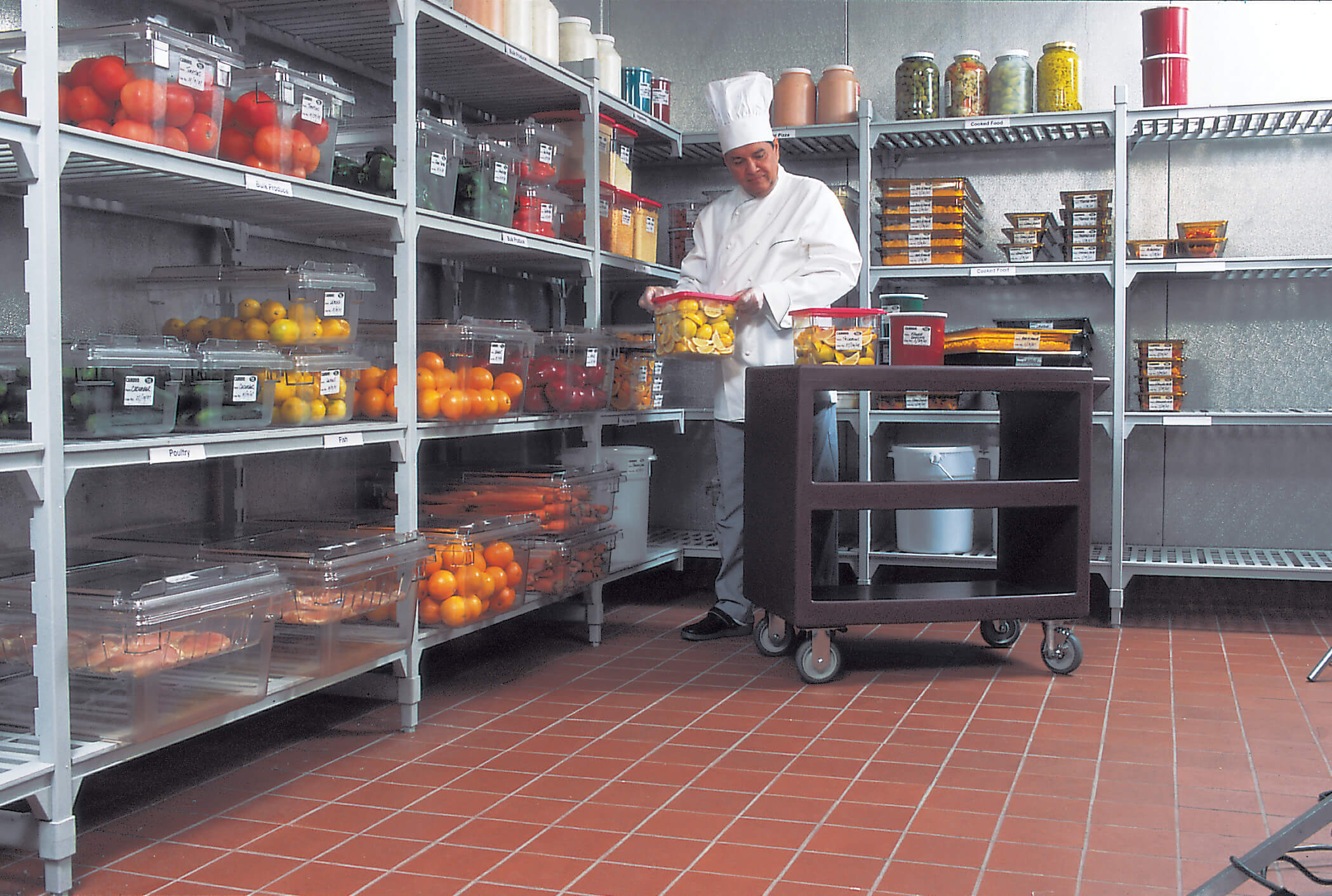SITXINV006 Receive, store and maintain stock
In this unit you will learn how to;
- Take delivery of stock
- Store stock in appropriate conditions
- Rotate and maintain stock
Introduction
Stock is the term used for the goods, or provisions, an organisation needs to carry out its business. Stock may be made up of the products an organisation sells, or the goods it needs to provide a service. For example; in a retail store the stock would be the products it sells to customers whereas in the food industry stock might be made up of all the produce they need to prepare and serve food.
In the hospitality industry stock can be non-perishable or perishable and may include:
- Beverages for bar, mini bar, restaurant and shop
- Food items such as; dairy products, canned products, dry goods, frozen goods, fruit, meat, oils, poultry, seafood, vacuumed sealed items or vegetables
- Equipment used for maintenance and cleaning of the premises
- Linen, such as table clothes, napkins, sheets and towels
- Single use products such as sugar sachets, paper cups and plastic cutlery
- Stationery, such as guest stationery and office supplies
- Brochures and promotional material
- Vouchers and tickets
Taking delivery of stock
Receiving stock is a task of great responsibility; the organisation will have ordered this stock for a reason, and will be expecting it to be delivered in full and in good condition.
Looking at the hospitality industry in particular many goods come into the business to provide a service to customers. These goods cost money and must therefore be handled correctly and carefully so that they are not damaged, spoiled or lost.
There are four main types of supplies that all require different handling and storage. These are;
- frozen foods
- perishable and semi-perishable foods
- non-perishable foods
- non-food supplies
When deliveries of stock are made it is essential that they be checked to ensure that everything that was ordered was actually sent and that it arrived in good condition and there are a number of procedures that must be followed here. Before we look at these procedures we will, first, look at food safety and how this impacts on the receiving and storing of goods.
Frozen food
There will be some foods that will be delivered in a frozen state. This might include;
- chicken, meat, fish and seafood
- ice cream and desserts
- pre-prepared fruits and vegetables.
It is important that such frozen food be kept between –15oC and –18oC so that it stays frozen until it is ready to be used; should it start to thaw, bacteria can grow and make the food unsafe to eat. So when delivered, it must be transferred from the refrigerated truck directly into a freezer.
Perishable food
Perishable goods are foods that can rapidly spoil if they are left at room temperature. Such foods include:
- fresh fruit and vegetables
- fresh meat and fish
- dairy products such as milk, yoghurt and cream
- freshly cooked foods
Perishable food should be stored in the refrigerator between 0oC and 5oC, although some fresh fruits and vegetables can be stored in a cool room. The most perishable foods are fresh, moist and have high protein. These include meat and fish, and even when stored in a fridge, these only last between two and four days.
….. more on this in the learner guide…
Checking incoming stock
When deliveries of stock are made it is essential that they be checked to ensure that everything that was ordered was actually sent and that it arrived in good condition and there are a number of procedures that must be followed here. Before we look at these procedures we will, first, look at food safety and how this impacts on the receiving and storing of goods.
Food Safety Standards
Receiving stock is the formal receipt and acceptance of commodities used in the hospitality food industry. However, receiving goods is not a simple matter of accepting those goods and storing them. Not only are there a range of procedures that may need to be followed to ensure quality products have been received, but there are also legal issues to consider.
There are laws that set standards for receiving and storing food so that the food remains safe to eat. These involve;
- The Food Act – Each state has its own Food Act. They all, however, require food businesses to make sure that the food they sell is safe to eat. They set minimum (lowest level) standards for food storage, and hygienic food handling practices.
- Australia / New Zealand Food Standards Code (ANZFSC) – This code contains detailed regulations for a food business to operate safely, including receiving and storing food. The Food Act in each state is based on this code. The code specific to receiving and storing food is Standard 3.2.2
For purchase information go back to hospitality page
